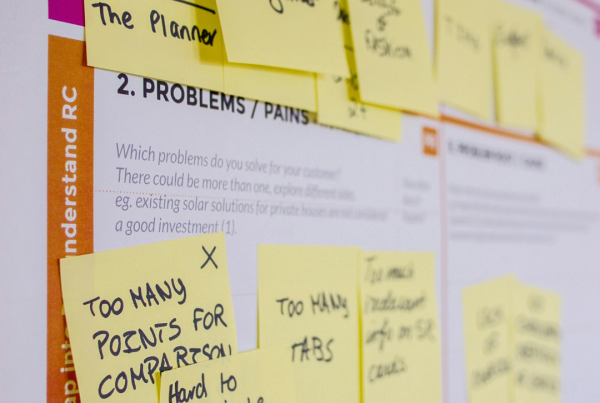Part 3 of ‘How to Build a Design Agency for Under $3K in 5 Years’
In the freelancing world, stability is often the most valuable currency. Unlike a full-time job, freelancers can earn more in some months and less in others. It’s one of the reasons banks tend to reject loans for freelancers due to the income volatility.
In this third part of my miniseries on how to build a design agency for under $3K, I’m going to teach you how to do exactly that — establish a stable earning through retainer clients.
A retainer contract is the first step to grow your design agency, as you get paid upfront every month for an agreed volume of work. With a retainer agreement, it allows you to book in sales on a recurrent basis, which can help you hire people, expand your office and so forth in the future. I suggest you do some research first on the distinct types of contract you can have with clients.
If you haven’t been following my miniseries, I wrote about how to get all your ducks in a row in the first part and then how to build a brand and portfolio in the second.
We’ve now arrived at the next few big steps of your journey, where your little freelancing business will start to resemble a design agency.
Step 10: Win your first retainer client
There’s a difference between a business-based mindset and a project-based mindset. It’s super important for a business owner to have the former. If you want to grow, you need to continually work towards building a long-term business, rather than keeping your plate full with projects.
Although my goal was to own and run a successful business, I didn’t have a clear plan on how to achieve it when I first started out. You could say I was a bad combination of naivety and inexperience.
I was mindlessly working project after project, client after client, day in and day out. It never occurred to me to offer retainer fees for any of my clients. In fact, it was pure luck that gifted me the first retainer client.
I was working in a part-time job while building my design agency, Relab, on the side.
And I was busy.
I remember lying down on my bed feeling dog-tired after an 80-hour work week that I could just pass out easily. Then I would smile and think to myself that this journey is real. I’m on track to build my business.
Pretty soon, I had to reduce my part-time gig to 3 days. My manager was fully supportive because I was transparent about what I did on the side from the start, though I’m not sure if she took me seriously.
After 6.5 months, I was ready to quit my job. I had enough projects to keep me going and I was confident on winning new ones when they run out. When I spoke to my manager about leaving, we discussed about finding my replacement. Then she brought up the idea of outsourcing the work to my new business.
I couldn’t believe it.
That night, I drafted my first retainer contract. I searched for a few good samples online and wrote my own version. I had no one to proofread it, no lawyer to back me up, nor did I have a mentor in this situation. But I knew I had to grab this opportunity fast.
The next day, she did minor adjustments in the contract, gave some feedback and voila… Relab had a guaranteed 30-hour work every month. I walked out of the building feeling so grateful and I still am until today.
Could I have proposed a retainer contract to existing clients without having to wait for my ex-manager to bring up the idea?
Of course!
The problem was I never thought that someone would pay me upfront regularly just to provide my services to them. Thinking back, I could have easily offered it to at least 1 or 2 other clients. It may not have been 30 hours a month. But even 10 or 15 hours a month would have meant so much to a startup.
”This is why you need a business-based mindset, not a project-based mindset.
How to offer retainer contracts
To do so, I offered a few simple promises to my clients including:
- A reduced hourly rate
- Guaranteed priority service
- My availability pretty much any time
Always negotiate based on the value that you bring them, not what you’re charging them. Here are the basic rules if you want to offer retainer services:
- You’ve worked on at least one successful big project with the client and they require regular work from you
- You’ve done a few small jobs for the client and they need you for a longer term and it’s more efficient and cheaper for them to sign you on a retainer
- You happen to know the client very well or the client is a friend or family, and they trust you enough to do regular work.
Step 11: Quit your job and work for yourself full time
It’s time to put your maths skills to the test to see whether you have enough recurring income to survive working for yourself.
In my case, the 30-hour monthly retainer contract and other projects I had were enough to hand in my resignation letter. On top of this, I had some savings and an emergency cash fund of at least $2000. Make sure you do too.
If your finances aren’t steady enough, look for another retainer contract.
If it is, then congratulations. Give yourself a pat on the back because you’re ready to make the leap to running your own business full time. Resign respectfully and try to make the transition as smooth as possible for your employers. Never burn bridges because you may need their help later.
I can tell you, without a doubt, that sending my resignation letter was one of the most liberating moments of my life. The game was on — 100%.
In hindsight, it was the start of my worries because growing a business is no joke. But for that moment, I was proud of myself.
You should be too because you can finally stop calling yourself a freelancer. You’re now the principal, design director or creative director of your design agency. And boy, it’s a glorious feeling.
Check out my next post where I lay out the details of when and how to hire people for your business.
Illustrations by: Irenne Tj
https://www.instagram.com/irennetj/
https://www.facebook.com/inspirationneverends/







